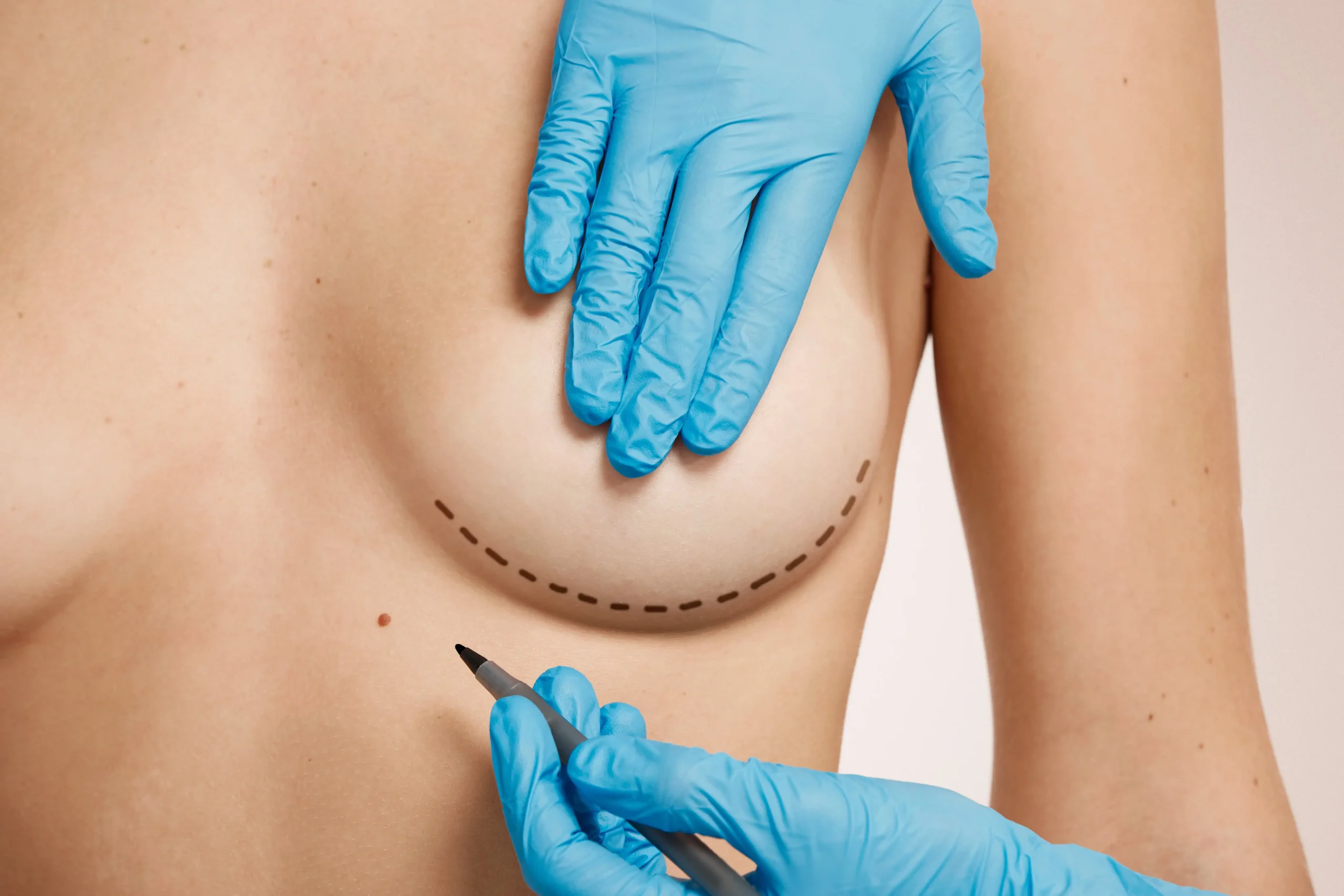
Breast augmentation is a cosmetic surgery procedure designed to increase breast size or improve breast shape using implants or fat transfer. It’s commonly chosen by individuals who want a fuller figure, better symmetry, or wish to restore volume lost due to weight loss, pregnancy, or aging.
The procedure is typically performed under general anesthesia. The surgeon makes a small incision—often under the breast fold, around the areola, or in the armpit—and places the implant either behind the breast tissue or beneath the chest muscle. After proper positioning, the incisions are closed with care to ensure minimal visible scarring.
People choose breast augmentation for a variety of personal and physical reasons, including:
You may be a good candidate for breast augmentation if you:
The minimum recommended age is:
These guidelines ensure full physical development and emotional maturity. Your surgeon will assess your readiness during your consultation.
Two main types of implants are used:
Some clinics also offer fat transfer augmentation, using the patient’s own body fat for a more natural and subtle enhancement.
International patients are typically advised to stay in Türkiye for at least 5–7 days post-operation for follow-ups.
Preparation is key to a smooth experience:
After surgery:
Most patients return to work or light routines within a week and see visible results settle within a few months.
One
Local anesthesia
Immediately
7 days
None
* For informational purposes only, be sure to consult your doctor for diagnosis and treatment.
Most people resume normal routines within a week. Swelling continues to decrease over several weeks, and final results typically become visible by 2–3 months.
Yes, most people can still breastfeed—especially if the implants are placed under the muscle. Discuss your future plans during your consultation for the safest approach.
Yes. Choosing the right implant size, shape, and placement is key. An experienced surgeon will ensure the final result suits your body proportionally and naturally.
Implants can be removed or replaced later. Many people choose to update or revise their implants after 10–15 years, or sooner if their preferences change.
The incisions are placed in discreet areas and usually fade significantly over time. With proper post-op care, most scars become minimal and barely noticeable.
Yes, FDA-approved silicone implants are made from safe and biocompatible materials. Today’s gel-filled implants are durable against rupture and do not leak, as the contents are cohesive rather than fluid. However, like all medical implants, regular check-ups are recommended.
Modern silicone implants do not have an exact "expiration date," but manufacturers estimate a durability of 10 to 20 years. The condition of the implants should be monitored through regular medical check-ups, and they should be replaced if any deformation or capsular contracture develops.
For the first 4–6 weeks after surgery, a medical bra should be worn, heavy lifting should be avoided, and sleeping positions should follow your surgeon's advice. Swelling and bruising are normal and the healing process varies from person to person. Follow-up appointments should not be skipped, and alcohol and smoking should be avoided during recovery.
Yes. When they wear down or are damaged, veneers can be removed and replaced by a dentist with new restorations.

Medipol University Hospital, being the justifiably proud of Medipol Education and Health Group in Turkey and in the world, resulting in this spirit, is a health complex having JCI standards accepting patients from all over the world.
TEM Avrupa otoyolu göztepe çıkışı no:1, 34214 Bağcılar/İstanbul